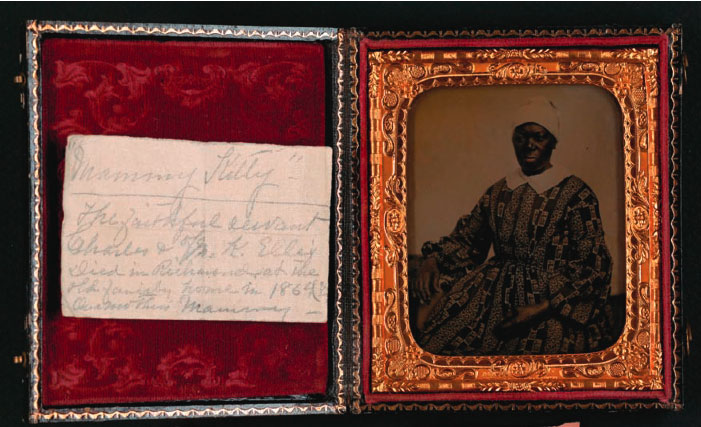Battles ravaged the landscape, political maneuvers transformed the economy and profound regional tensions resulted in the creation of West Virginia.
The Civil War’s impact on the culture, politics and geography of Virginia was momentous.
“‘Who Shall Tell the Story?’ Voices of Civil War Virginia,” a new exhibit that runs through August at the University of Virginia’s Mary and David Harrison Institute for American History, Literature and Culture, reveals how the war drastically changed the Old Dominion by focusing on the voices of those who directly experienced it. Admission is free.
Letters, diaries, scrapbooks, maps, newspapers, song sheets, broadside advertisements, photographs and physical artifacts drawn from the Albert and Shirley Small Special Collections Library’s rich holdings illustrate how so many Americans lived the experience of the devastation of the Civil War.
The voices behind these manuscripts, books and artifacts come from all walks of life, from Confederate and Union soldiers, working women and war widows, black troops and southern Union sympathizers, enslaved people and prisoners of war, schoolchildren and University of Virginia students, poets and musicians, wounded soldiers and nurses.
“The biggest problem the curators faced was selecting from the numerous documents and artifacts those that spoke most powerfully of the experiences of many different Virginians: men and women, black and white, slave and free, Confederate and Union,” said Edward Gaynor, head of collection development and description in the Small Special Collections Library.
The exhibition’s title comes from a manuscript by the American poet Walt Whitman who, after witnessing a battle in Virginia, wrote:
Who shall tell the story?
We talk I say of stories of this war – have histories of this war already; and shall have books of full detail, hundreds of them. In printed books, full histories of this war will come. O heavens! What book can give the history of this war?
Diverse and contradictory, the plurality of stories represented in the exhibition confirms the continuing relevance of Whitman’s question.
Some of the exhibit’s highlights include:
- Thomas Jefferson’s “Firebell in the Night” letter (pertaining to the issue of slavery);
- A leaf from the original manuscript of Stephen Crane’s “The Red Badge of Courage”;
- A medicine case and trepanning kit once belonging to a prominent Norfolk physician;
- Walt Whitman’s notebook from his time volunteering as a Civil War nurse;
- The last Confederate newspaper published in Richmond; and
- The original tally of votes on secession in the Virginia General Assembly.
There is also valuable material that pertains directly to the University, including:
- The diary of U.Va. law professor John Minor, recording the Union Army’s entrance into Charlottesville in March 1865 under the command of George Armstrong Custer;
- An 1861 letter to the editors of the Baltimore Exchange from an anonymous group of U.Va. students, recounting the raising of a Confederate flag at the University on March 15 that year; and
- The earliest known photograph of the Rotunda and the U.Va. Lawn.
The exhibit features a number of relatively recent acquisitions that have never been publicly displayed. These include:
- An 1802 letter from then-Gov. James Monroe to Virginia Congressman William B. Giles recounting the General Assembly’s session in which an attempt was made to promote the separation of the western and eastern parts of Virginia (which finally occurred in 1861);
- William Pope Dabney’s Montpelier Plantation ledger, 1858-1880, containing the records of the Powhatan County estate, including names, ages and values of his slaves;
- The 1865 diary of Loomis L. Langdon, who was among the first Union soldiers to enter Richmond and is credited with raising the first U.S. flag over the Virginia Capitol on April 3, 1865.
“We are fortunate at the University of Virginia to have a wealth of resources that allows us to tell the stories of some of the lesser-known participants in the Civil War,” Gaynor said.
More information about the Special Collections Civil War exhibit can be found here, and the University’s Civil War blog can be found here.
Media Contact
Article Information
December 3, 2014
/content/special-collections-exhibit-explores-civil-war-many-voices

